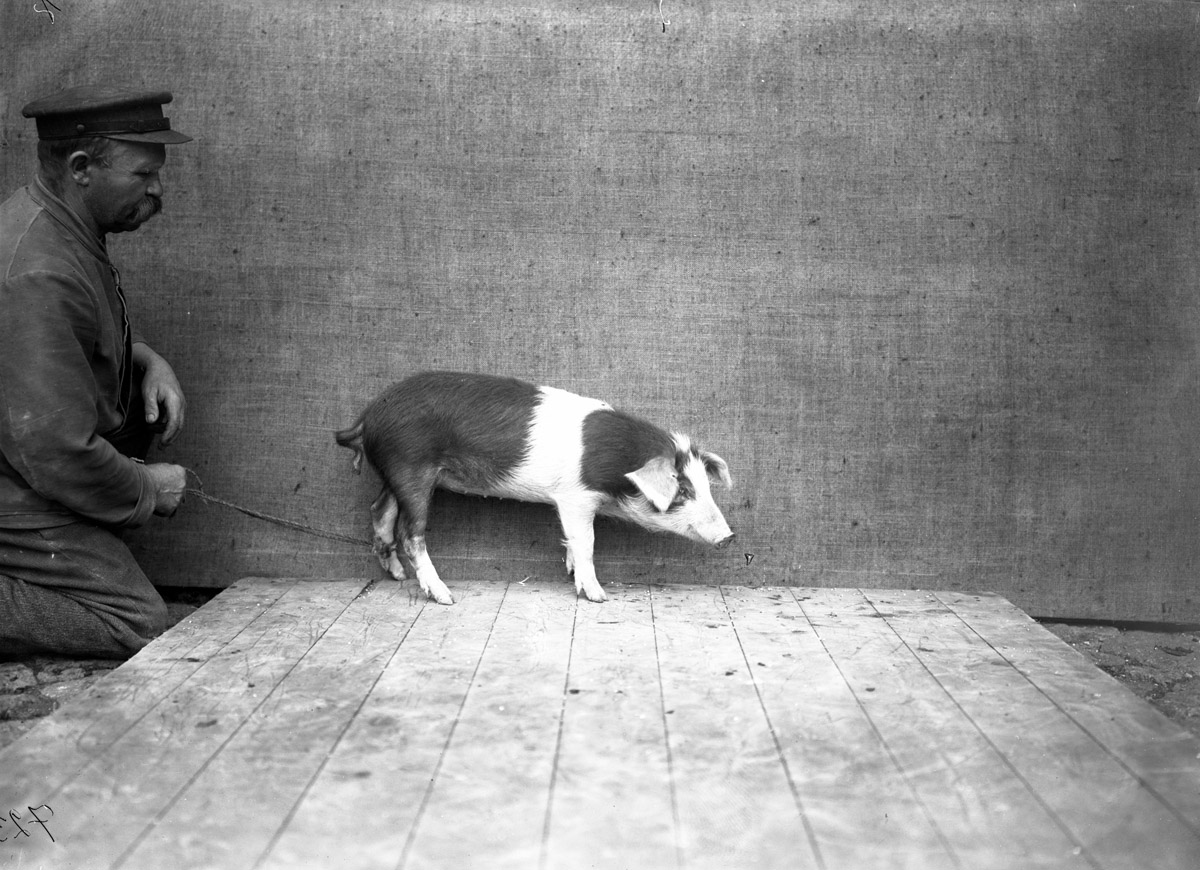SUS 100
The Domestic Pig: Selective Breeding and Prevailing Tastes, Morphological and Genetic Variation over 100 Generations
Over the past one hundred years, livestock breeding has become increasingly oriented towards the development of animal breeds which produce meat at large industrial scales to suit modern human tastes. We ask whether this human-directed selection pressure upon German domestic pig breeds (Deutsches Edelschwein and Deutsches Landschwein) is detectable in comparison to wild boar populations using DNA and geometric morphometric analysis of osteological material. This will allow us to evaluate the speed of this evolutionary change and inform our understanding of speciation and the effects of human pressure upon domestic animals. This project is based upon the historic collections from the Museum für Haustierkunde "Julius Kühn", one of the largest and most unique collections of domestic animal bones in the world. This collection originates from one of the first livestock science centers in Germany and was a key location for the development of early modern German domestic pig breeds.
Sus 100 is based at the Central Natural Science Collections at Martin Luther University Halle-Wittenberg and includes researchers from the Leibniz Institute for Farm Animal Biology (FBN), Dummerstorf , and the Leibniz Institute for Evolution and Biodiversity Research Berlin at the Berlin Museum of Natural History, and is funded by the German Federal Ministry for Education and Research (BMBF, Förderkennzeichen 01UQ1702A) under the "Network - Open up - Explore. Alliance for University Collections”.
Project team
- Dr. Ashleigh Haruda (Project leader, geometric morphometrics)
Dr. A. Haruda is a zooarchaeologist with a specialization in geometric morphometric methods. Her previous doctoral research at the University of Exeter, UK, utilized these measurement methods to explore prehistoric pastoralism in the Central Asian steppe. She is now based at the Central Natural Science Collections at Martin Luther University Halle-Wittenberg as the project lead and postdoctoral researcher on the Sus 100 project.
- Dr. Emrah Çoraman (Research Scientist, ancient DNA)
Dr. Emrah Çoraman is an evolutionary biologist with a particular interest in the evolutionary history of species. His previous studies focused on the mechanisms that have shaped the current genetic diversity patterns. He investigated the phylogeographic patterns various Palaearctic bat species. Emrah is now based at the Natural History Museum in Berlin, working on the genomic analyses of the historical material of the Sus 100 project.
Dr. Steinheimer is the head of the ZNS (Central Natural Science Collections) and an active ornithologist. His studies in biology, zoology, and ecology at the Universities of Erlangen (Germany) and Vienna (Austria) culminated in 2005 with a Ph.D. on the history of sciences and ornithological nomenclature at Rostock University. Between 1998 and 2002 he was a curator at the bird group at The Natural History Museum London/Tring (UK) and between 2002–2004 was a researcher at the Museum für Naturkunde Berlin (Germany). Between 2004–2008 he worked for BirdLife International in Myanmar and was the assistant editor of the Handbook of the Birds of the World with MPI Ornithology in a project based at the American Museum of Natural History New York for Lynx-Edicions Barcelona. Dr. Steinheimer joined Martin Luther University Halle-Wittenberg in 2008 and in 2010 was appointed head of the Central Natural Sciences Collections
- Dr. Renate Schafberg
- Prof. Dr. Hermann Swalve
- Dr. Monkia Wensch-Dorendorf
- Prof. Dr. Steffen Maak
- Prof. Dr. Klaus Wimmers
- Dr. Diana Stört
- Prof. Dr. Peter Kunzmann
- Prof. Dr. F. Meyer
- Dr. Christiane Quaisser
- Dr. Thomas Schmutzer





